



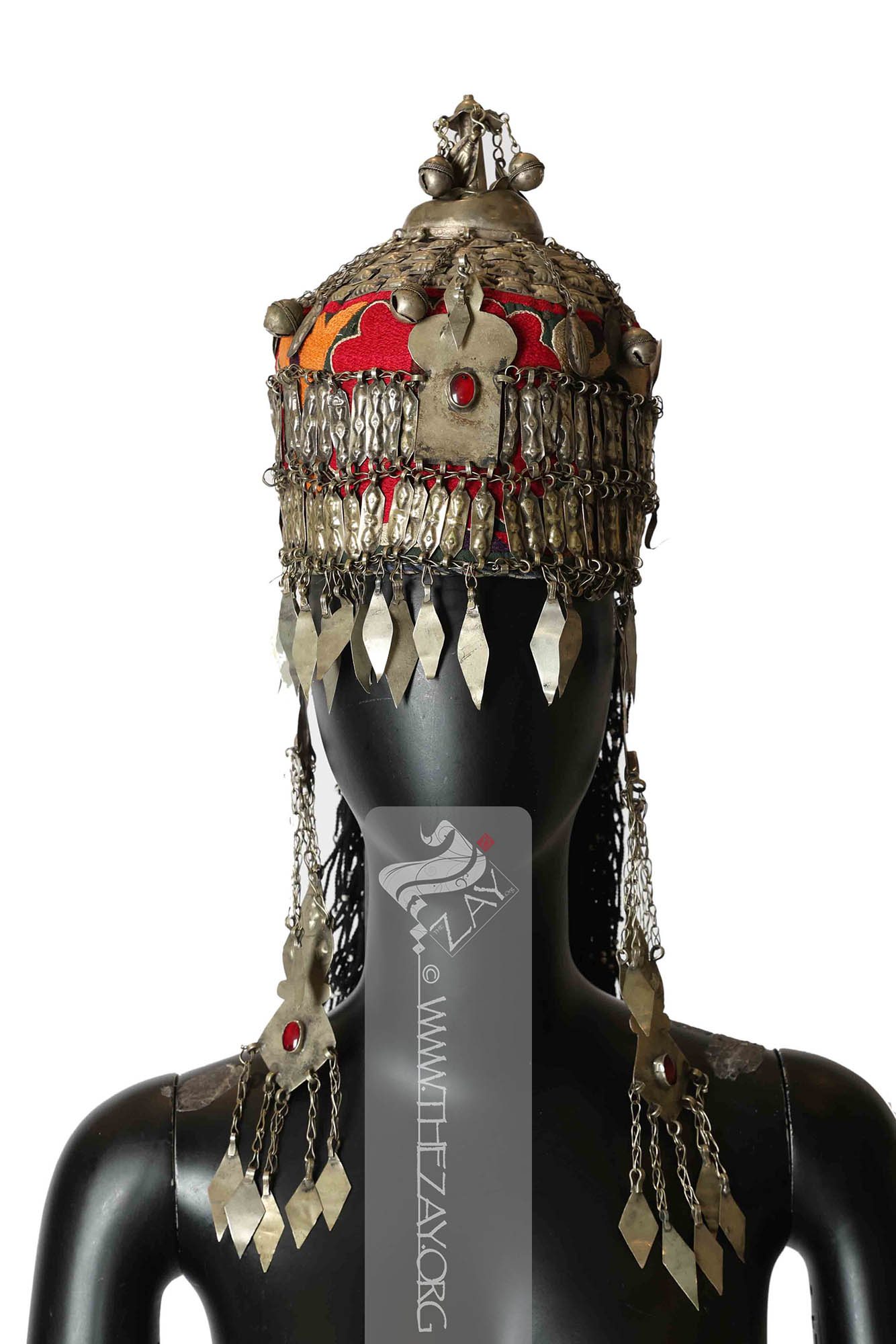
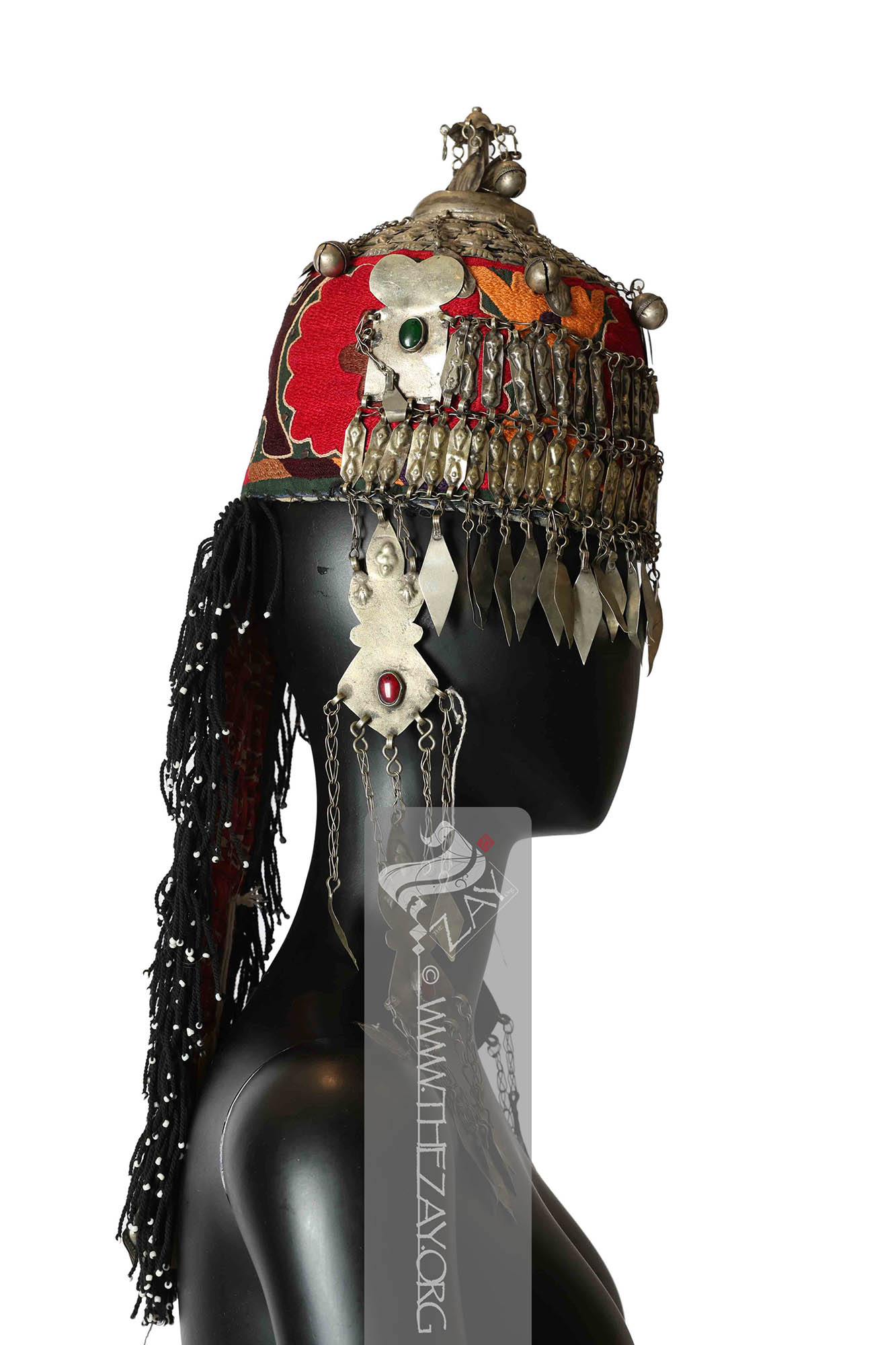
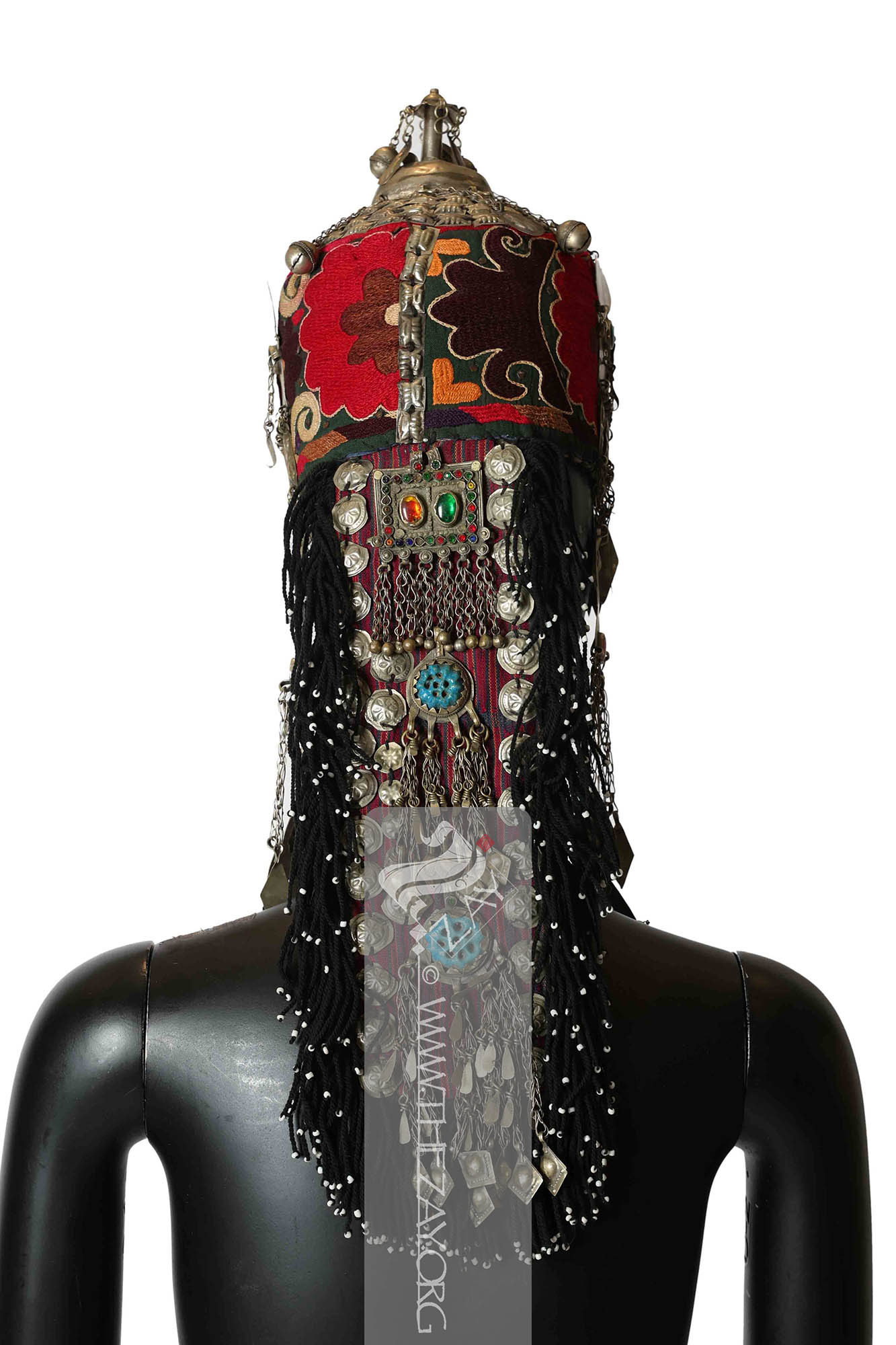
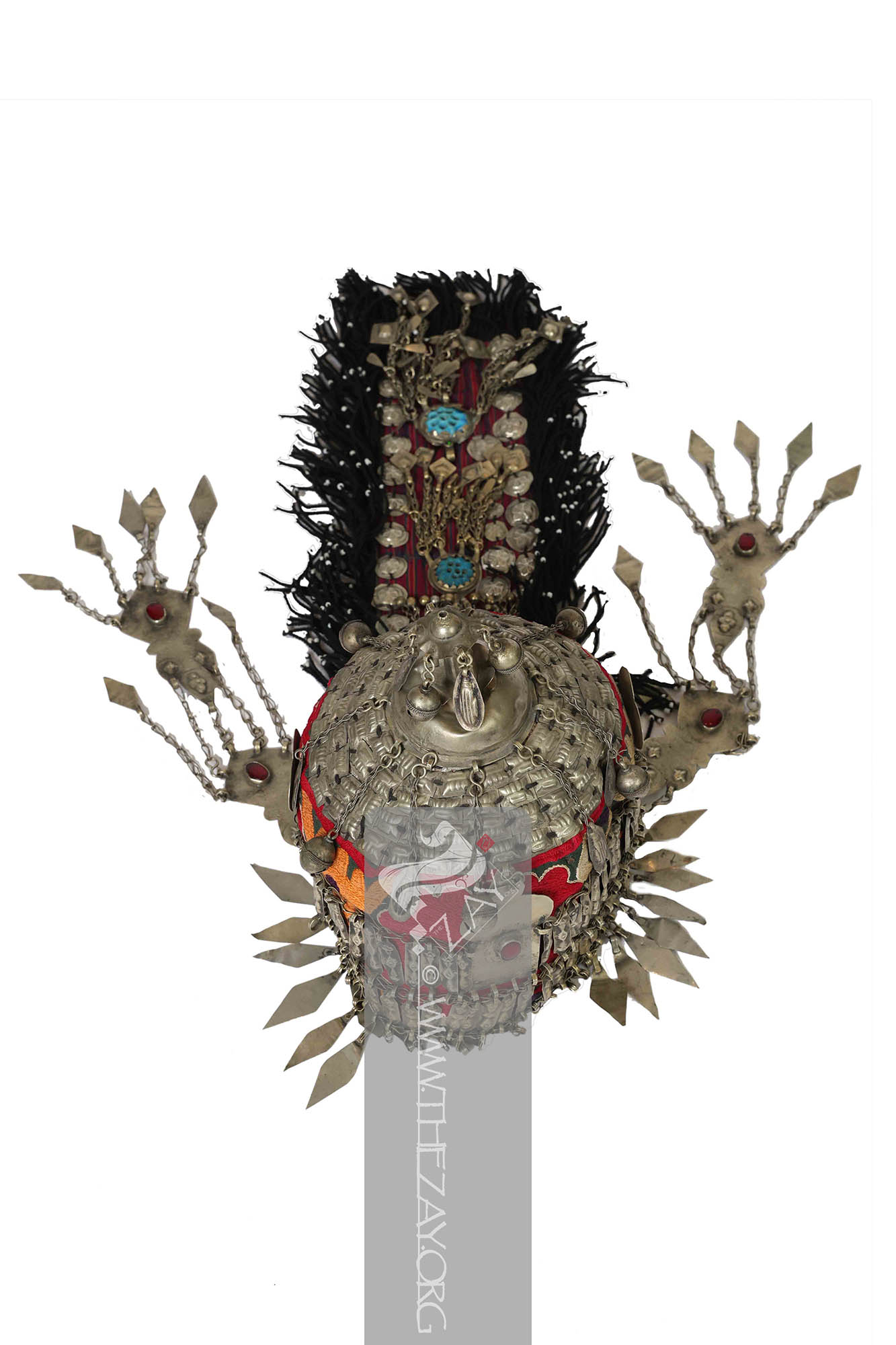
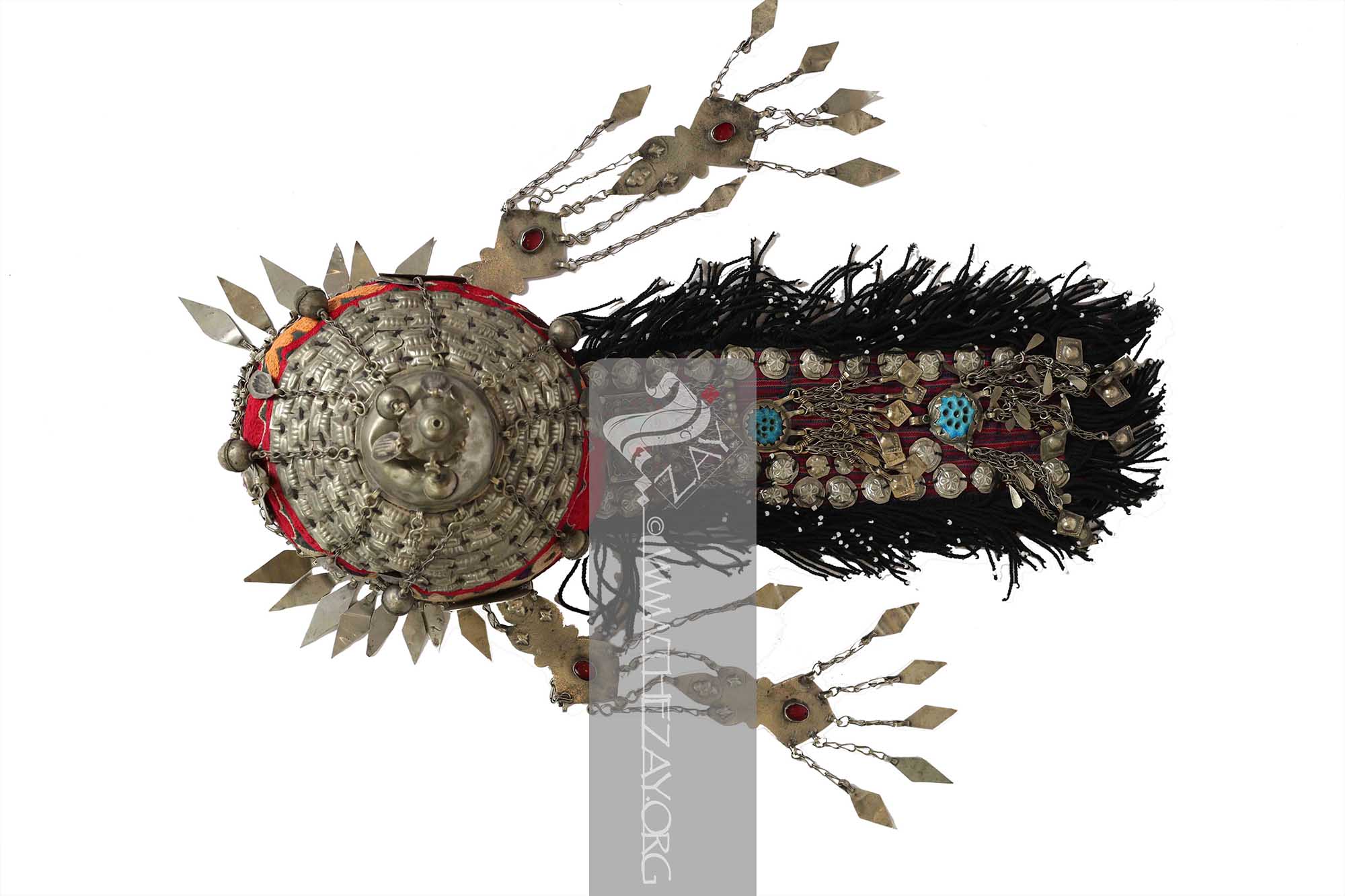
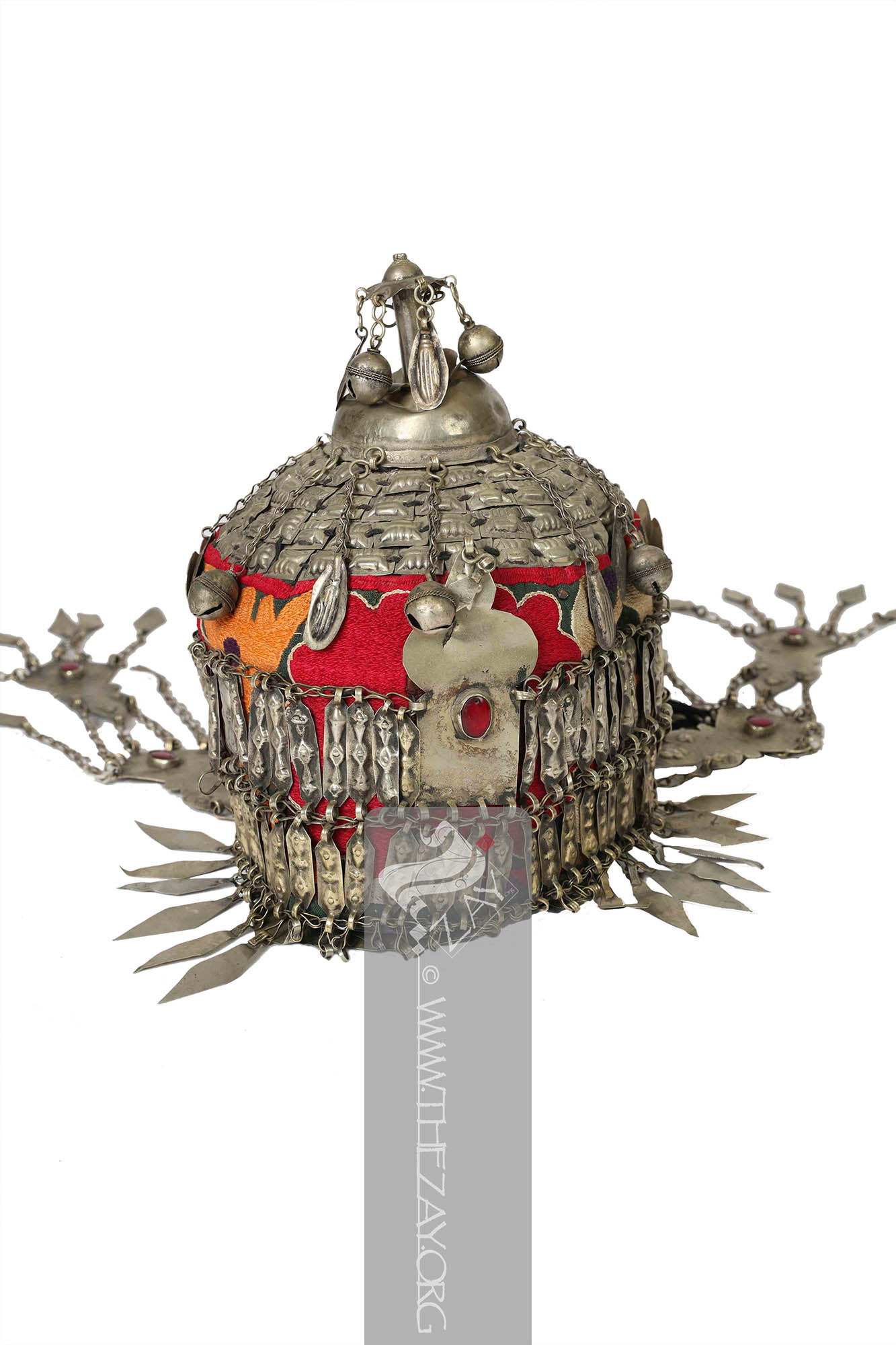
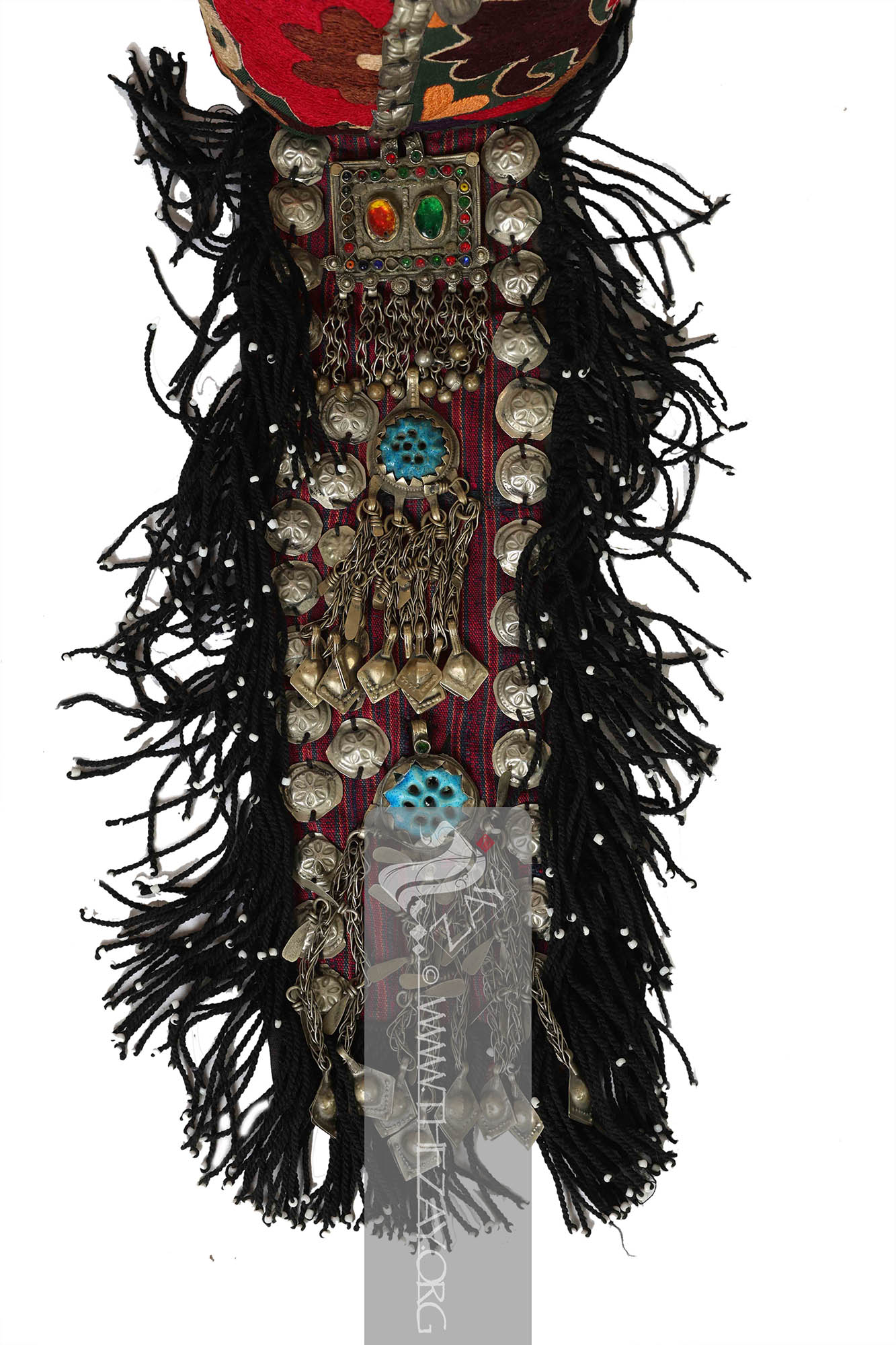
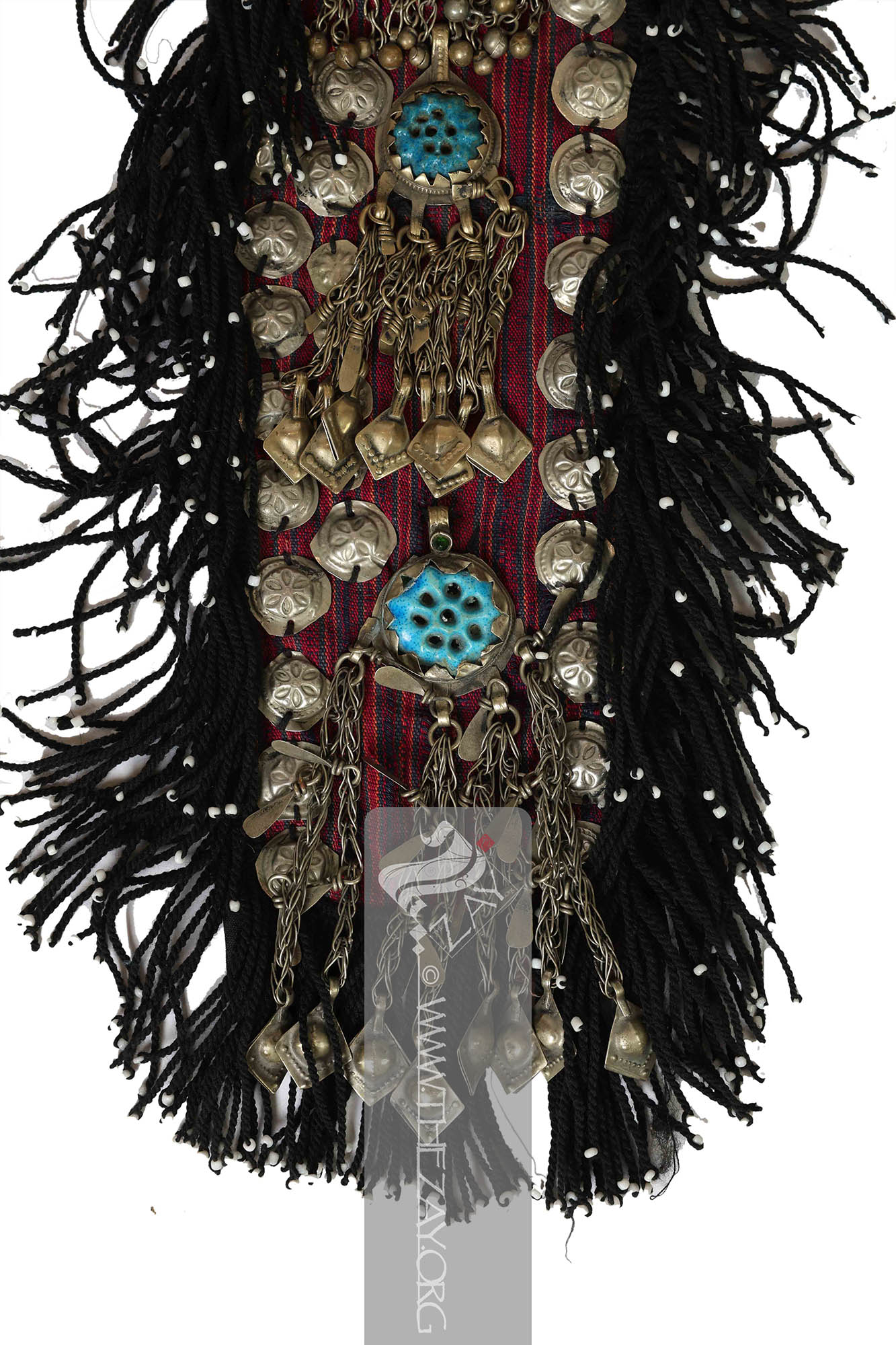
| Local Name | Qubba'h |
| Object Category | Headwear |
| Gender | Female |
| Place Of orgin | Asia |
| Region | Central Asia |
| Object Range | Uzbekistan, Turkmenistan, Tajikistan, Kazakhstan, Kyrgyzstan, Azerbaijan, Afghanistan, Iran, India, Pakistan, Russia, Turkey |
| Dimensions | Length: 64 cm Width: 19 cm |
| Materials | Wool Cotton Metal |
| Technique | Hand Stitched Hand Embroidered Woven |
| Motif | Floral Geometric |
| Provenance | Purchased, Blue Souk, Sharjah 1992 |
| Location | The Zay Zay: (Arabic: costume, Pl. azyaā’), a set of clothes in a style typical of a particular country or historical period. Initiative |
| Status | In Storage |
| ZI number | ZI1992.501017 ASIA |
Object History
This heavily embellished women’s ceremonial headgear of tribal Turkmen origin was purchased by Dr. Reem El Mutwalli from the Islamic Antique Suq, recently named as The Blue Souk, Sharjah, in 1992. It was eventually added to The Zay Zay: (Arabic: costume, Pl. azyaā’), a set of clothes in a style typical of a particular country or historical period. Initiative to enhance its collection.
Object Features
This is a conical women’s ceremonial – possibly bridal – headgear common amongst the tribal Turkmen women of northwest Afghanistan, Turkmenistan, and Uzbekistan.
Embellished with (suzani Suzani: (Farsi: suzandozi : needlework, from Farsi: suzan: needle, dozi: embellishment), type of embroidered and decorative Central Asian tribal textile art usually on a cotton fabric, embroidered in both silk or cotton thread with primarily chain, satin, and buttonhole stitches as well as couching technique. ) style embroidery using a plethora of different stitches from (chain_stitch Chain_stitch: An embroidery technique where a looped stitch is made in a continuous chain-like pattern. Each stitch is formed by looping the thread through the previous stitch, creating a linked chain. ) to (blanket_stitch Blanket_stitch: A basic sewing stitch used to secure the edges of fabric or create decorative borders by looping the thread over the edges of blankets, quilts, and other fabrics and pulling it through, forming a series of evenly spaced stitches that resemble a chain. ) in red, orange, purple, brown, ivory, and (indigo Indigo: (Latin: Indigo – India, synonym: nil Nīl: (Latin: indigo), Arabised term for Indigo, a natural dye belonging to the ‘Indigofera Tinctoria’ species of plants that have been cultivated in East Asia, Egypt, India, and Peru since antiquity. According to Pliny the Elder, it was named after India as it was the source of the dye.), a natural dye belonging to the ‘Indigofera Tinctoria’ species of plants that has been cultivated in East Asia, Egypt, India, and Peru since antiquity. According to Pliny the Elder, it was named after India as it was the source of the dye. ) blue, it has a striking similarity to the head gears of Tartar Turkmen tribal women from the Pontic Caspian steppe of lower Volga region north of the Caspian Sea.
It could be divided roughly into three parts – the wide forehead with attached sideburns or temple pendants set with carnelians, a distinct domed finial (qubba'h) with bells and chains, and the heavily embellished neck piece hanging down the nape.
The wide forehead is mostly hand embroidered with (appliqued Appliqued: (French: appliquer – Apply), ornamental needlework where small pieces of decorative fabric are sewn on to a larger piece to form a pattern.) silver platelets set with semi-precious stones and carnelians. The front is covered with chain links commonly known as ‘shinjir’, possibly derived from the Persian word ‘zanjir’ meaning chains, and a series of embossed rectangular and diamond-shaped metal platelets hanging from the edge. A two-tiered, long metal temple pendant embellished with carnelians hangs from each side, covering the ears. The rounded top is completely covered with appliqued Appliqued: (French: appliquer – Apply), ornamental needlework where small pieces of decorative fabric are sewn on to a larger piece to form a pattern. metal platelets.
A finial or qubba'h adorns the top with small round bells, and platelets hanging on chain links. This particular feature suggests that this headgear was possibly from a Teke Turkmen tribe.
qubba'h is the first decorative jewellery that a Tukmen girl receives for her skullcap. The Teke girls wear this ceremonially until their marriage. Usually, it would be decorated with feathers and plumes of owls and falcons, the absence of which suggests that the girl is engaged.
The back of the headgear has a flap covering the nape. Constructed of woven cotton fabric, this flap is embellished with small metal discs (capraz Capraz: (Pronunciation: čapraz), small, embossed metal discs of Turkmen origin usually used to embellish garments and accessories. ), platelets and chain links, a silver amulet with semi-precious stones, and two round, floral-shaped (turquoise Turquoise: (French: turquois – present day Türkiye; Synonyms: firuze Firuze: (Persian: pērōzah – "victory", later Arabic: fayrūz; Synonyms: firuze, pheroza), is a naturally occurring opaque mineral mined in abundance in Khorasan province of Iran and has been used for making dye for centuries. , pheroza), is a naturally occurring opaque mineral mined in abundance in Khorasan province of Iran and has been used for making dye for centuries. The term is a derivative of the French word for the country Türkiye once called Turkey. ) amulets. These turquoise Turquoise: (French: turquois – present day Türkiye; Synonyms: firuze Firuze: (Persian: pērōzah – "victory", later Arabic: fayrūz; Synonyms: firuze, pheroza), is a naturally occurring opaque mineral mined in abundance in Khorasan province of Iran and has been used for making dye for centuries. , pheroza), is a naturally occurring opaque mineral mined in abundance in Khorasan province of Iran and has been used for making dye for centuries. The term is a derivative of the French word for the country Türkiye once called Turkey. amulets are interestingly very similar to Northern Africa and Iraq, even in the present.
A series of thick twisted black cotton ribbons with white beads at the end of each ribbon hang from the hem of the flap. The flap is lined in red and ivory printed cotton with floral motifs that reflect the floral motifs embossed on the metal platelets and the discs. The cap is padded and lined with thick ivory cotton, providing cushioning for the wearer as these headgears were traditionally worn directly over the head or sometimes with a veil as an attempt at a better fit.
Interestingly, the turquoise Turquoise: (French: turquois – present day Türkiye; Synonyms: firuze Firuze: (Persian: pērōzah – "victory", later Arabic: fayrūz; Synonyms: firuze, pheroza), is a naturally occurring opaque mineral mined in abundance in Khorasan province of Iran and has been used for making dye for centuries. , pheroza), is a naturally occurring opaque mineral mined in abundance in Khorasan province of Iran and has been used for making dye for centuries. The term is a derivative of the French word for the country Türkiye once called Turkey. amulet is known from North Africa to the Caucasus. It is believed to be of Babylonian origin in Iraq and is often called the ‘seven eyes’ (sb’_’yun Sb’_’Yūn: (Arabic: sb’: seven; ‘yūn: eyes), blue ceramic talisman, generally placed on walls or doors, smaller versions of which are worn as amulets for personal protection. Common to Iraq, North Africa, and Central Asia it is believed to be of Babylonian origin. ) that protects the wearer from the evil eye, as it is believed to disperse the energy of evil eye in seven parts, thus weakening its harmful ability. It has been a practice in Iraqi tradition to hang such talismans in palaces, public squares, walls, and facades of houses, as well as wear or carry them in person.
Links